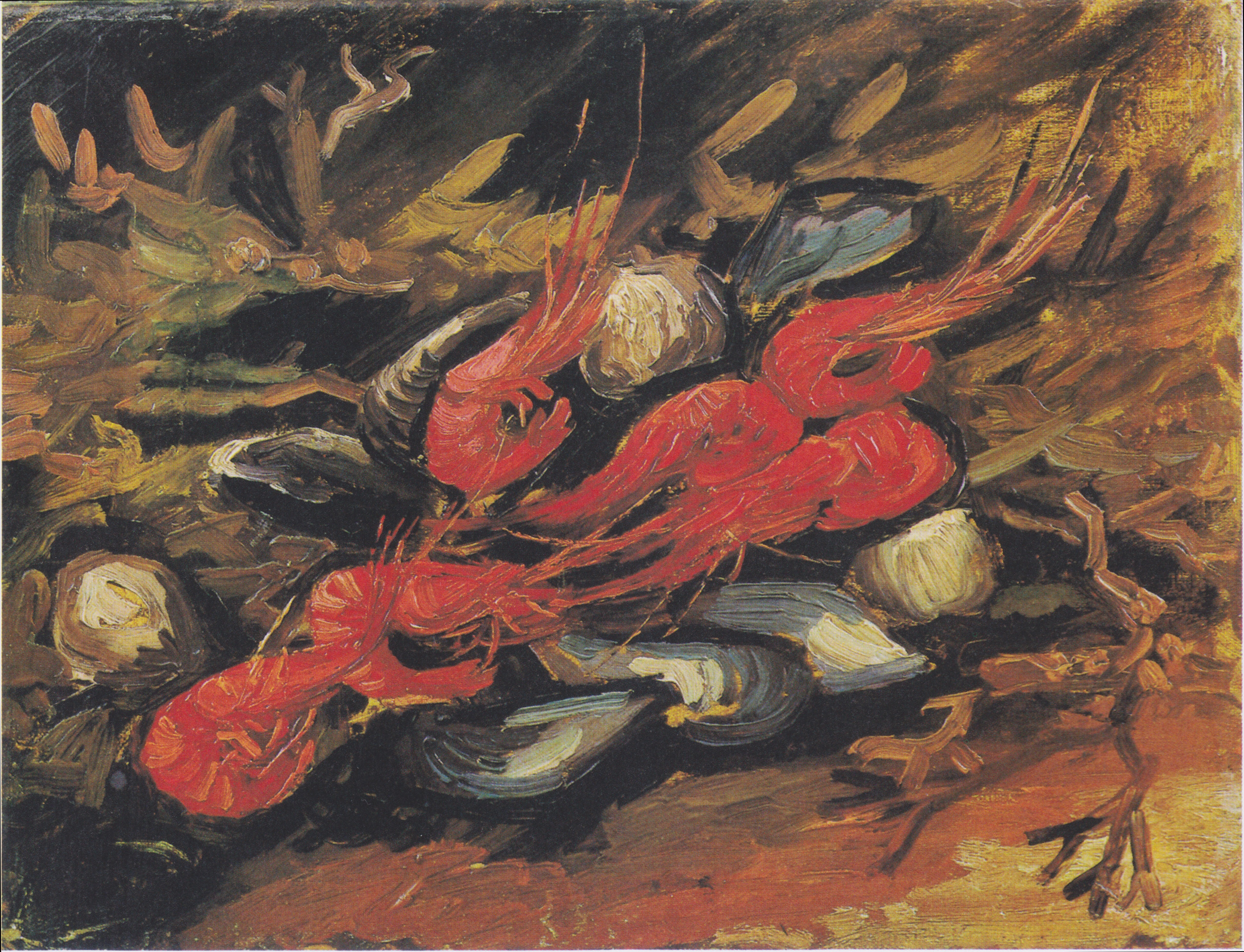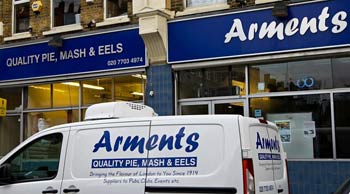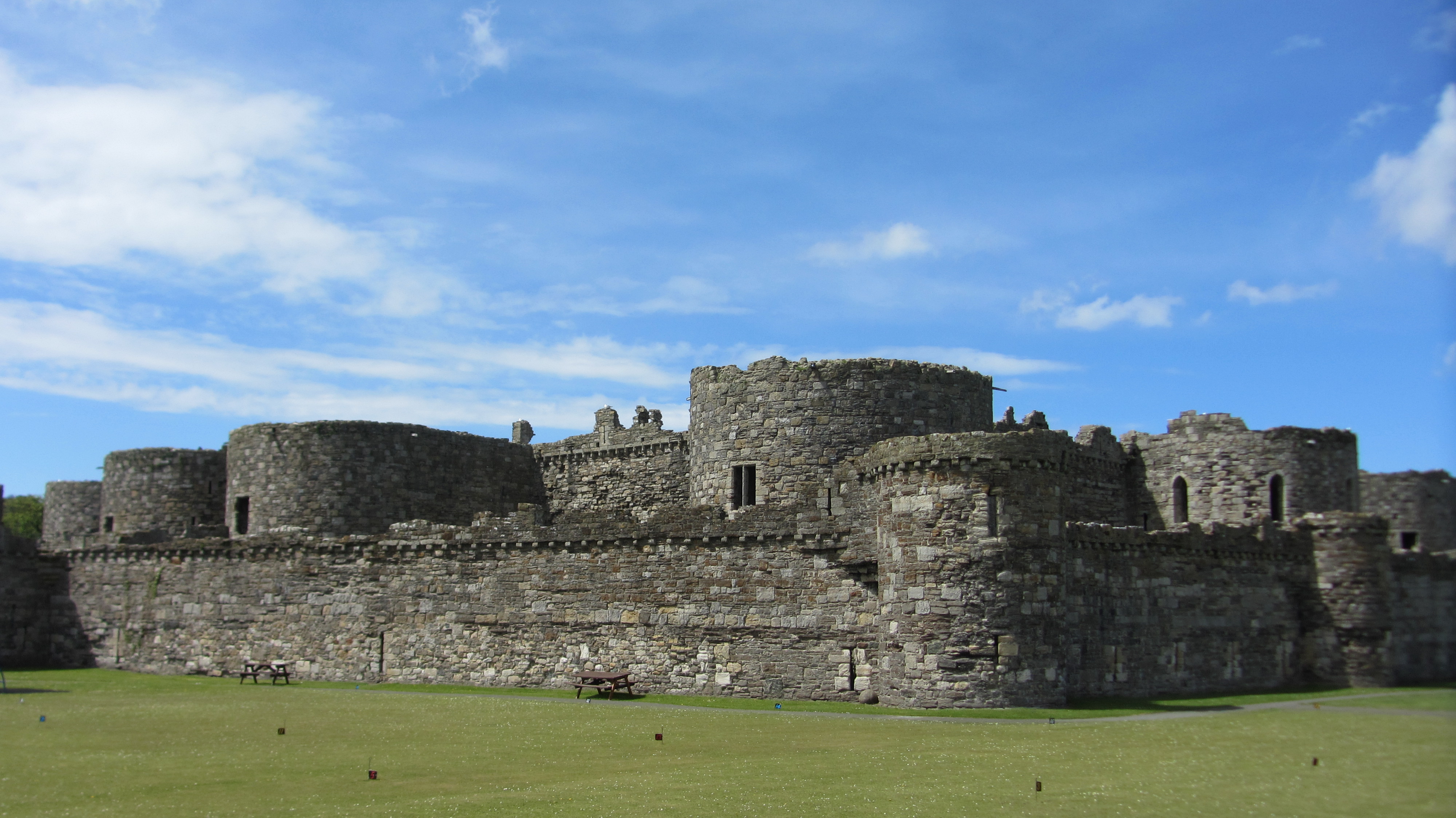|
Dressed Crab
Dressed crab is a traditional seafood meal in British cuisine made of the meat of an edible or brown crab served in its own shell. A mixture of white and brown meat is used, often arranged in an artistic style. If the claws are included, these may be cracked by the diner or the meat from the claws may be included whole. The crab meat is normally served with Marie Rose sauce- or occasionally mayonnaise or tartar sauce- brown bread, salad, and lemon slices. Variations may be seasoned with Cayenne pepper, parsley, or breadcrumbs. A more substantial meal can be made by adding chips. A simpler variation is the crab meat removed from the shell and as a filling for a sandwich with similar accompaniments. The meal is associated with English coastal counties, and there are notable crab fisheries at Cromer, Newlyn, and Mersea Island. A significant amount of crab is also caught around Pembrokeshire and Anglesey in Wales and all around the coast of Scotland, and dressed crab is usually ava ... [...More Info...] [...Related Items...] OR: [Wikipedia] [Google] [Baidu] |
Crab Meat
Crab meat, also known as crab marrow, is the edible meat found in a crab, or more specifically in its legs and claws. It is widely used in global cuisines for its soft, delicate and sweet flavor. Crab meat is low in fat, and provides about of food energy per serving. Among the most commercially available species are the brown crab (''Cancer pagurus''), blue crab (''Callinectes sapidus''), blue swimming crab (''Portunus pelagicus''), and red swimming crab (''Portunus haanii''). Grading systems vary by region, with distinctions such as white meat and brown meat based on body part and color. The methods of crab meat harvesting differ between fishery, fisheries, including both whole-crab processing and declawing, where one or both claws are removed and the live crab is returned to the water. This practice is controversial due to animal welfare concerns, although some species can regenerate lost claws through molting, typically about a year later. Crab meat is consumed fresh, f ... [...More Info...] [...Related Items...] OR: [Wikipedia] [Google] [Baidu] |
Cromer
Cromer ( ) is a coastal town and civil parish on the north coast of the North Norfolk district of the county of Norfolk, England. It is north of Norwich, northwest of North Walsham and east of Sheringham on the North Sea coastline. The local government authorities are North Norfolk District Council, whose headquarters is on Holt Road in the town, and Norfolk County Council, based in Norwich. The civil parish has an area of and at the 2011 census had a population of 7,683. The town is notable as a traditional tourist resort and for the Cancer pagurus, Cromer crab, which forms the major source of income for local fishermen. The motto ''Gem of the Norfolk Coast'' is highlighted on the town's road signs. History The town has given its name to the ''Cromerian Stage'' or ''Cromerian Complex'', also called the ''Cromerian'', a stage in the Pleistocene glacial history of north-western Europe. Cromer is not mentioned in the ''Domesday Book'' of 1086. The place-name 'Cromer' is f ... [...More Info...] [...Related Items...] OR: [Wikipedia] [Google] [Baidu] |
Malt Vinegar
Vinegar () is an aqueous solution of diluted acetic acid and trace compounds that may include flavorings. Vinegar typically contains from 5% to 18% acetic acid by volume. Usually, the acetic acid is produced by a double Fermentation in food processing, fermentation, converting simple sugars to ethanol using yeast and ethanol to acetic acid using acetic acid bacteria. Many types of vinegar are made, depending on source materials. The product is now mainly used in the culinary arts as a flavorful, acidic cooking ingredient or in pickling. Various types are used as condiments or Garnish (cooking), garnishes, including balsamic vinegar and #Grains, malt vinegar. As the most easily manufactured mild acid, it has a wide variety of industrial and domestic uses, including functioning as a Cleaning agent, household cleaner. Etymology The word "vinegar" arrived in Middle English from Old French (''vyn egre''; sour wine), which in turn derives from Latin: (wine) + (neuter gender of , so ... [...More Info...] [...Related Items...] OR: [Wikipedia] [Google] [Baidu] |
Shrimp And Prawn As Food
Shrimps and prawns are types of shellfish seafood that are consumed worldwide. Prawns and shrimps are crustacea and are very similar in appearance with the terms often used interchangeably in commercial farming and wild fisheries. A 1990s distinction made in Indian aquaculture literature, which increasingly uses the term "prawn" only for the freshwater forms of palaemonids and "shrimp" for the marine penaeids that belong to different suborders of Decapoda. This has not been universally accepted. In the United Kingdom, the word "prawn" is more common on menus than "shrimp", whereas the opposite is the case in North America. Also, the term "prawn" is loosely used for larger types, especially those that come 30 (or fewer) to the kilogram — such as "king prawns", yet sometimes known as "jumbo shrimp". In Britain, very small crustaceans with a brownish shell are called shrimps, and are used to make the traditional English dish of potted shrimps. Australia and some other Common ... [...More Info...] [...Related Items...] OR: [Wikipedia] [Google] [Baidu] |
Cockle (bivalve)
A cockle is an edible marine bivalve mollusc. Although many small edible bivalves are loosely called cockles, true cockles are species in the family Cardiidae.>MolluscaBase eds. (2022). MolluscaBase. Cardiidae Lamarck, 1809. Accessed through: World Register of Marine Species on 2022-02-09/ref> True cockles live in sandy, sheltered beaches throughout the world. The distinctive rounded shells are bilaterally symmetrical, and are heart-shaped when viewed from the end. Numerous radial, evenly spaced ribs are a feature of the shell in most but not all genera (for an exception, see the genus '' Laevicardium'', the egg cockles, which have very smooth shells). The shell of a cockle is able to close completely (i.e., there is no "gap" at any point around the edge). Though the shell of a cockle may superficially resemble that of a scallop because of the ribs, cockles can be distinguished from scallops morphologically in that cockle shells lack "auricles" (triangular ear-shaped protrusi ... [...More Info...] [...Related Items...] OR: [Wikipedia] [Google] [Baidu] |
Jellied Eels
Jellied eels is a traditional English dish that originated in the 18th century, primarily in the East End of London. The dish consists of chopped eels boiled in a spiced stock that is allowed to cool and set, forming a jelly. It is usually served cold. History Eels were historically a cheap, nutritious and readily available food source for the people of London; European eels were once so common in the Thames that nets were set as far upriver as London itself, and eels became a staple for London's poor. The earliest known eel, pie and mash houses opened in London in the 18th century, and the oldest surviving shop, M.Manze, has been open since 1902. At the end of the Second World War, there were around 100 eel, pie and mash houses in London. In 1995, there were 87. In the present day, there are relatively few eel, pie and mash shops, although jellied eels are sold in some of the capital's delicatessens and supermarkets. The water quality of the Thames, having improved g ... [...More Info...] [...Related Items...] OR: [Wikipedia] [Google] [Baidu] |
Whelk
Whelks are any of several carnivorous sea snail species with a swirling, tapered shell. Many are eaten by humans, such as the common whelk of the North Atlantic. Most whelks belong to the family Buccinidae and are known as "true whelks." Others, such as the dog whelk, belong to several sea snail families that are not closely related. True whelks (family Buccinidae) are carnivorous, and feed on annelids, crustaceans, mussels and other molluscs, drilling holes through shells to gain access to the soft tissues. Whelks use chemoreceptors to locate their prey. Many have historically been used, or are still used, by humans and other animals as food. In a reference serving of whelk, there are of food energy, 24 g of protein, 0.34 g of fat, and 8 g of carbohydrates. Dog whelk, a predatory species, was used in antiquity to make a rich red dye that improves in color as it ages. Usage The common name "whelk" is also spelled ''welk'' or even ''wilk''. The species, g ... [...More Info...] [...Related Items...] OR: [Wikipedia] [Google] [Baidu] |
Mussel
Mussel () is the common name used for members of several families of bivalve molluscs, from saltwater and Freshwater bivalve, freshwater habitats. These groups have in common a shell whose outline is elongated and asymmetrical compared with other edible clams, which are often more or less rounded or oval. The word "mussel" is frequently used to mean the bivalves of the marine family Mytilidae, most of which live on exposed shores in the intertidal zone, attached by means of their strong Byssus, byssal threads ("beard") to a firm substrate. A few species (in the genus ''Bathymodiolus'') have colonised hydrothermal vents associated with deep ocean ridges. In most marine mussels the shell is longer than it is wide, being wedge-shaped or asymmetrical. The external colour of the shell is often dark blue, blackish, or brown, while the interior is silvery and somewhat nacreous. The common name "mussel" is also used for many freshwater bivalves, including the freshwater pearl mussels. F ... [...More Info...] [...Related Items...] OR: [Wikipedia] [Google] [Baidu] |
Scotland
Scotland is a Countries of the United Kingdom, country that is part of the United Kingdom. It contains nearly one-third of the United Kingdom's land area, consisting of the northern part of the island of Great Britain and more than 790 adjacent Islands of Scotland, islands, principally in the archipelagos of the Hebrides and the Northern Isles. To the south-east, Scotland has its Anglo-Scottish border, only land border, which is long and shared with England; the country is surrounded by the Atlantic Ocean to the north and west, the North Sea to the north-east and east, and the Irish Sea to the south. The population in 2022 was 5,439,842. Edinburgh is the capital and Glasgow is the most populous of the cities of Scotland. The Kingdom of Scotland emerged as an independent sovereign state in the 9th century. In 1603, James VI succeeded to the thrones of Kingdom of England, England and Kingdom of Ireland, Ireland, forming a personal union of the Union of the Crowns, three kingdo ... [...More Info...] [...Related Items...] OR: [Wikipedia] [Google] [Baidu] |
Wales
Wales ( ) is a Countries of the United Kingdom, country that is part of the United Kingdom. It is bordered by the Irish Sea to the north and west, England to the England–Wales border, east, the Bristol Channel to the south, and the Celtic Sea to the south-west. , it had a population of 3.2 million. It has a total area of and over of Coastline of Wales, coastline. It is largely mountainous with its higher peaks in the north and central areas, including Snowdon (), its highest summit. The country lies within the Temperate climate, north temperate zone and has a changeable, Oceanic climate, maritime climate. Its capital and largest city is Cardiff. A distinct Culture of Wales, Welsh culture emerged among the Celtic Britons after the End of Roman rule in Britain, Roman withdrawal from Britain in the 5th century, and Wales was briefly united under Gruffudd ap Llywelyn in 1055. After over 200 years of war, the Conquest of Wales by Edward I, conquest of Wales by King Edward I o ... [...More Info...] [...Related Items...] OR: [Wikipedia] [Google] [Baidu] |
Anglesey
Anglesey ( ; ) is an island off the north-west coast of Wales. It forms the bulk of the Principal areas of Wales, county known as the Isle of Anglesey, which also includes Holy Island, Anglesey, Holy Island () and some islets and Skerry, skerries. The county borders Gwynedd across the Menai Strait to the southeast, and is otherwise surrounded by the Irish Sea. Holyhead is the largest town, and the administrative centre is Llangefni. The county is part of the Preserved counties of Wales, preserved county of Gwynedd. Anglesey is the northernmost county in Wales. The Isle of Anglesey has an area of and a population of in . After Holyhead (12,103), the largest settlements are Llangefni (5,500) and Amlwch (3,967). The economy of the county is mostly based on agriculture, energy, and tourism, the latter especially on the coast. Holyhead is also a major ferry port for Dublin, Ireland. The county has the second-highest percentage of Welsh language, Welsh speakers in Wales, at 57.2%, ... [...More Info...] [...Related Items...] OR: [Wikipedia] [Google] [Baidu] |






